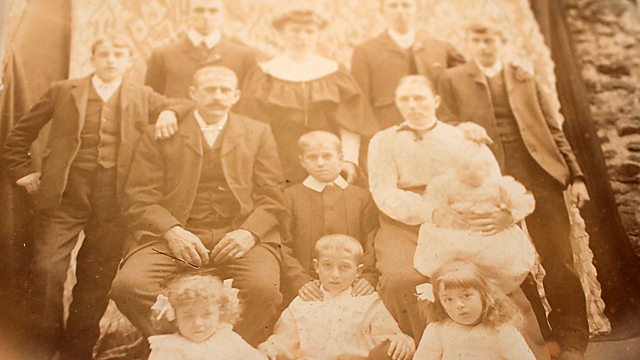Penzance, Cornwall: Four Brothers Lost to War
Four of ten siblings were killed on the WW1 front line
When WW1 was declared in 1914 the Rowe family were living in Penzance. Descendent Valerie Mallet from Camborne explains what happened to her four uncles.
“My mother lost four brothers in the First World War…to lose one son was bad enough but to lose four you would never ever get over it.”
The Rowe brothers are among eleven men with the same surname whose names are carved in Cornish granite on the Penzance War memorial.
Charlie Rowe served with Nelson battalion, R.N. Div. Royal Navy Volunteer Reserve. Charlie was just 18 when he died on 18 November 1916. Donkeyman 'Bertie' Rowe died at sea after the sinking of S.S. Coath (Penzance) on 13 December 1916. Bertie was 28 and has no known grave. Private Sidney James Rowe of the 2nd/6th Batallion, Royal Warwickshire Regiment, died aged 23 on 6 December 1917. And finally Private ‘Fred’ Rowe of the 2nd Batallion, Duke of Cornwall Light Infantry, died of his wounds after the war ended on 13 January 1919.
Valerie Mallet says her mother thought of her brothers every day. “When their birthdays came up she would always say it’s Charley, or Fred or Sid’s birthday.”
Meanwhile another Cornishman; a village rector, was trying to find a way to the frontline but as a clergyman was not permitted to enlist to fight. But a determined Reverend Phillip Gendall eventually found a way. His granddaughter Elizabeth Homer from Phillack has traced his story.
Elizabeth says Rev Phillip Gendall left Penzance to become a priest then became a curate at St Peters Church in Coventry. A local newspaper article explains how he finally found himself a role.
‘The Reverend gentleman has made persistent efforts to get to the front. He first of all offered his services as Chaplain but owing to the overwhelming numbers who desired to serve in this capacity he was not accepted. He then decided to try to join the Royal Engineers and asked permission of the Bishop, this was refused on the ground that clergy ought not to go into the army as combatants. But not to be denied he saw an opening by joining to the RAMC (Royal Army Medical Corps). The Bishop gave him permission for that.’
Elizabeth has cherished copies of the extensive diaries he kept. The diaries are articulate and detailed providing a startling insight into the horrors he and his comrades faced. Later Rev Gendall was to tend soldiers fatally wounded and in the last moments of life, describing the horrifying battlefield.
“I had a fearful day, stretcher bearing all day under heavy fire. We had to pass through a barrage each time we went to the aid post that was surrounded by dead and dying men and almost blown in by shells. The approach to it was full of mud of the poorest sticky kind, if you sank in you needed to be pulled out. We would approach the barrage again, rest then dash through as quickly as possible. Awful sights in the trenches, dead and dying everywhere. Had to walk over the dead to get to the living, and such dead, headless men and legless men too and the mud.”
Location: 13 St Henry Street, Penzance, Cornwall TR18 2DR
Image shows a portrait of the Rowes brothers
Photograph courtesy of Mrs Valerie Mallett (their niece)
Presented by Hannah Stacey
Duration:
This clip is from
Featured in...
![]()
����ý Radio Cornwall—World War One At Home
Places in Cornwall that tell a story of World War One
![]()
Memory—World War One At Home
Memorials and the commemoration of wartime lives
More clips from World War One At Home
-
![]()
The loss of HMY Iolaire
Duration: 18:52
-
![]()
Scotland, Slamannan and the Argylls
Duration: 07:55
-
![]()
Scotland Museum of Edinburgh mourning dress
Duration: 06:17
-
![]()
Scotland Montrose 'GI Brides'
Duration: 06:41







